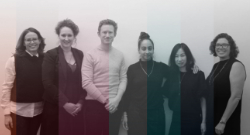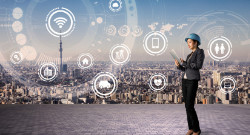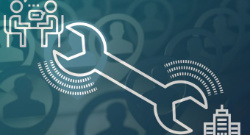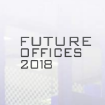How’s that New Year’s resolution going?

From chaos to balance: work/life integration
Appearances can be deceiving. A coral reef that’s glowing brightly might appear vibrantly healthy—when in fact it’s stressed out and near death. Sub-freezing temperatures could make it seem like global warming has reversed—when in fact they’re just blips on the screen of the larger climate picture. In the same way, our winter holidays can appear to be festive and fun-filled—when in fact, they are a pretty stressful time of the year. No wonder we always resolve to live better as soon as they’re over!
Thankfully, unlike beleaguered corals in a struggling reef, we humans have relative agency over our circumstances. As we at PLASTARC examine our own New Year’s resolutions and attempt to forge a path ahead that looks and feels good, we invite you to join us below for this issue’s On Our Minds exploration: that elusive achievement known as work/life balance.
On our minds
New Year’s Day, or Groundhog Day?
Show of hands: how many people reading this made a New Year’s resolution to work more? How about to drink more coffee? Leave the office later? (If anyone is actually raising their hand, we’ll just hope you’re joking.) ’course not! If you made a resolution at all, it no doubt sounded closer to the opposite of those. Most of us desire to do more for our own wellbeing, and our families’—not less.
If we’re all in agreement about this, why do we have to keep making resolutions year after year? Why is it so persistently hard to balance our personal time and interests with our professional endeavors? Counterintuitively, one reason could be that we’re conflating the appearance of work/life balance with the actuality of work/life integration. How did we get here?
Working virtually everywhere
Once upon a time, when our professional lives were more spatially separate from our home lives, achieving work/life balance seemed to boil down to simple geography. If we wanted to work, we had to physically go to work; therefore, if we wanted to stop working for the day, we could just go home. Now, of course, that border is quite blurred. Many of us have everything we need to do our jobs wherever we go. Some of us choose to work noon to 9:00 instead of 9:00 to 6:00. Our bosses might call us at home on our cell phone, our kids or parents might call us at work on our landline. What was once a firm boundary is now a dotted line, at best.
Mars vs. Venus
While changes in technology have played a big hand in the balance-to-integration shift, so have changes in gender distribution. Whether by nature or nurture, men and women create different kinds of workplaces (we’ll explore this more next month, in our Valentine’s Day Edition!). Historically, the "male brain" has focused more around discrete tasks, and the “female brain” more around synthesizing information. As more women have entered formal work environments in recent decades, we’ve seen the conversation start to change from “balance,” which implies separate entities in harmony, to “integration,” which implies a melding. (Further complicating the gender mix are children: more mothers than ever are working paying jobs, and more fathers are staying home with the kids. As these roles continue to change, the question of whether it makes more sense for families to strive for stricter or more relaxed boundaries between work and personal life remains far from settled.)
It’s generational too
In years past, people’s self-concept derived from many things beside what we did for work: our marital status, contributions to the community, the cars we drove, or the way we kept our homes, were major contributors to self definition. Today, the soaring performance of the knowledge economy has wed individual ability to corporate success; as a result, workers’ self-concept is becoming more and more closely tied to career. (In our March newsletter, we'll discuss how the unprecedented level of educational attainment among our younger workers is also a driving force.)
So how can I get some balance amid this integration?
Seeking employers who care
Thankfully, many of the companies who’ve been thriving in the knowledge economy have started to realize they’d better treat their brainy workers well—or they’ll lose them (and the money they bring in). Balance is well supported by positive peer pressure: creating the cultural permission to take care of oneself, both inside and outside of work, especially as demands at work continues to grow. Companies that offer their employees benefits like unlimited sick days and genderless parental leave—as well as those that invest in design typologies that encourage people to move around, get comfortable, and chat with their colleagues—are putting their dollars where their interests are: namely, in human wellbeing.
Amenities for your senses
Somewhere between intangible benefits and office layout are the amenities that fill your workday—or the lack of them that hollows it out. A sensory amenity could be anything from a potted plant on your desk that adds a bit of nature to speakers installed in restrooms that provide a little privacy music. Whatever form they take, and whether they’re initiated by employee or employer, touches like these that sooth or stimulate our senses bring myriad benefits, including maintaining our circadian rhythms and keeping our nerves intact.
Minding the details
When we talk about what stresses us out at work, we usually cite the most obvious stuff: the lousy commute, the coworker that drives us batty, or the hour we just wasted in a poorly planned meeting. We don’t talk much about the more minor things: the bad lighting, the slow internet connection, the strangely flavored coffee. Taken together, a bunch of these little aggravations can add up to be as frustrating and dispiriting as a few big ones. If we can’t shorten our commute or cut ties with the stapler guy just yet, at least details like good soundscaping and HappyLights are comparatively easy to obtain.
While the Puritan work ethic might still prevail in our modern world, it’s comforting to know there are some practical keys to unlocking work/life balance in the 21st century. If only we could say the same for restoring pH balance in those coral reefs.
From the archives
We are delighted to announce the one-year anniversary of our newsletter. Thanks in large part to our amazing Content Manager, April Greene. Check out our newsletter archive in case you missed any of our monthly meditations on the place-making power of multisensory design, the broad applicability of the scientific process, the likelihood that robots will soon be able to deal with your inbox, and more.
AIANY's Social Science and Architecture Committee. This platform has enabled the delivery of programming, research and events in support of brilliant design. For example, our December 2016 event “ I Love This Place! Social Research-Driven Design.” We moderated a discussion of the many ways organizations can anticipate human factors and harvest occupant feedback to build workplaces that stimulate and satisfy people. Also, a year ago, we presented at DisruptHR New York City 6.0 on the topic "Building a Healthy Workplace." Herein we posited that while employee experience resides at the intersection of IT, HR, real estate, and facilities management, none of those disciplines have historically claimed primary responsibility.
Such human-centric concerns remain vital to the interests of corporate occupiers everywhere—indeed, they’re becoming only more important as the knowledge economy and our technological capacity to measure human factors grow.
In Case You Missed It
Recaps of our latest events, along with our own recently published articles can be found here. Coming up next, we're adding ideas from our favorite authors on work, place and more.

In Pursuit of Performance: Financial and Social Metrics of Architectural Success
At this December 11 companion to last year's event, we moderated a lively discussion about the many ways social science can drive both exceptional design and financial success.

How do you Spell Success? BTO!
Earlier this month in Seraview, we discussed how the worlds of human resources, real estate, and tech are increasingly intersecting—and how their connections are creating a whole new profession.

Workplace Predictions for 2018 (and beyond)
Just before bidding adieu to 2017, the PLASTARC team shared our top predictions about the future of workplace with our friends at Work Design Magazine.

Tips for Better Workplace Mental Health
Building on our October newsletter, this Workdesign article offers insight on optimizing for workplace mental health with four unique strategies.
Looking Ahead
There’s no better time than winter to appreciate the built environment! The PLASTARC team is busy planning for the following Q1 events, where we’ll get to dish about some of the issues we love most with our fellow workplace enthusiasts:

Future Offices 2018
Starting tomorrow in NYC, January 29 - 31, we’ll join our client Verizon and over two dozen other speakers for a series of workshops and tours focused on how the office landscape is adapting to a rapidly changing workforce demands and technology innovations.




